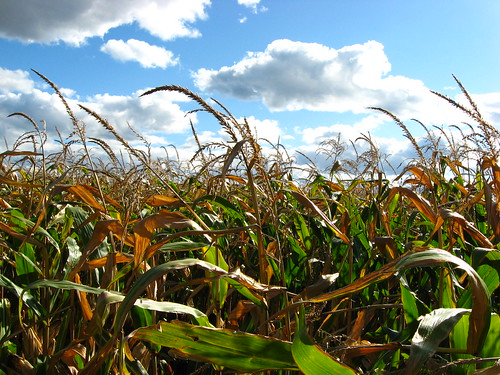Humans have been modifying plants' genetic material for a very long time now. By choosing plants with desirable characteristics, like good production, and replanting them, we end up with plant varieties that are more suited to our needs. Corn, for example, was developed by cultivating a kind of grass, teosinte, over thousands of years.
Plants that we refer to as 'genetically modified' are produced by a very different process. Instead of being changed gradually over many years of selective breeding, the DNA of the plant is modified directly. The genes that are modified might come from another variety of the same organism, or from an entirely different organism.
| A field of corn, from Flickr user Peter Blanchard |
Genetically modified crops are sometimes confused with hybrid crops. Hybrid crops are created by crossing one or more crop varieties using traditional breeding techniques. This might be done to combine desirable characteristics of different varieties: for example drought resistance from one variety and high production from another variety. Future generations of hybrid seeds will revert to the original varieties; if you save and replant seeds from hybrid plants, the parent varieties will grow rather than the newer hybrid varieties.

No comments:
Post a Comment